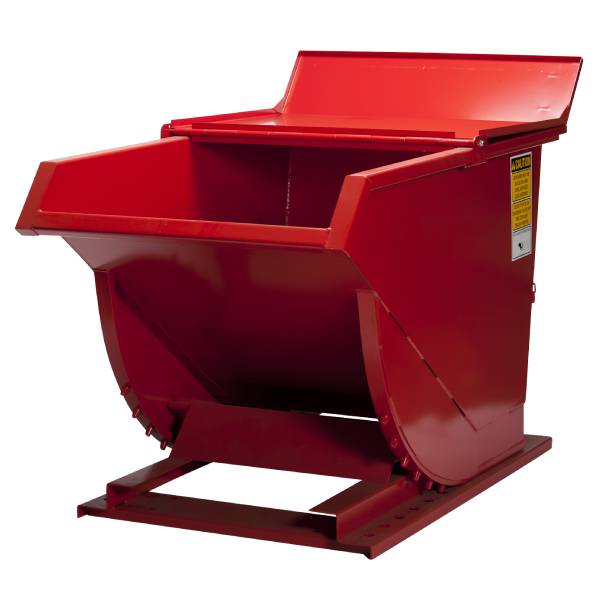Considerations for Using Self-Dumping Hoppers

Self-dumping hoppers are versatile tools used across various industries for efficient material handling and waste management. These hoppers offer significant benefits regarding convenience, productivity, and safety. As a leading provider of quality warehousing equipment, Unitran Manufacturers emphasizes that knowing your specific material handling needs is paramount. That is why we have compiled a list of considerations for using self-dumping hoppers.
Learn all about the benefits of self-dumping hoppers.
1. Types and Sizes of Self-Dumping Hoppers
Self-dumping hoppers come in different types and sizes to accommodate various materials and operational needs. Consider the type of material you intend to handle—whether it is bulk materials like gravel and sand or waste materials like construction debris or scrap metal. Make sure to choose a hopper size that matches your volume requirements and operational constraints. Smaller hoppers are suitable for confined spaces or smaller-scale operations, while larger hoppers are ideal for efficiently handling substantial materials.
2. Material Compatibility and Construction
Ensure that the self-dumping hopper you select is compatible with the material you will handle. Some hoppers have specific features, such as reinforced edges or liners, to handle abrasive materials without premature wear. For corrosive materials, choose hoppers made from materials resistant to corrosion, such as stainless steel or polyethylene. Proper material compatibility prevents damage to the hopper and ensures longevity and efficiency in material handling operations.
3. Safety Features and Operational Considerations
Prioritize safety by selecting self-dumping hoppers equipped with essential safety features. Look for features such as automatic latching mechanisms, safety chains, or locks to secure the hopper during transport and dumping. Evaluate ergonomic features like easy-to-operate handles to enhance maneuverability and reduce the risk of accidents during loading and unloading.
4. Environmental Adaptability and Operational Conditions
Assess the operational environment where the self-dumping hopper will be used. Consider floor conditions, space constraints, and accessibility for loading and unloading materials. Adapt the hopper’s design to suit outdoor or indoor environments, considering weather conditions and the need for stability during dumping operations.
5. Maintenance and Care
Regular maintenance and care are essential to prolong the lifespan and efficiency of self-dumping hoppers. Establish a maintenance schedule that includes routine inspections, lubrication of moving parts, and checks for wear and tear. It is important to replace worn components, such as seals or hydraulic cylinders, promptly to prevent operational issues and to ensure the safe handling of materials. Clean hoppers regularly to remove debris or residue that could affect performance or safety.
If you are interested in exploring our range of self-dumping hoppers or you have questions about our other offerings, please reach out to the Unitran Manufacturers team. You can contact us via our online form, and we will gladly assist you with any inquiries you may have about our products.

